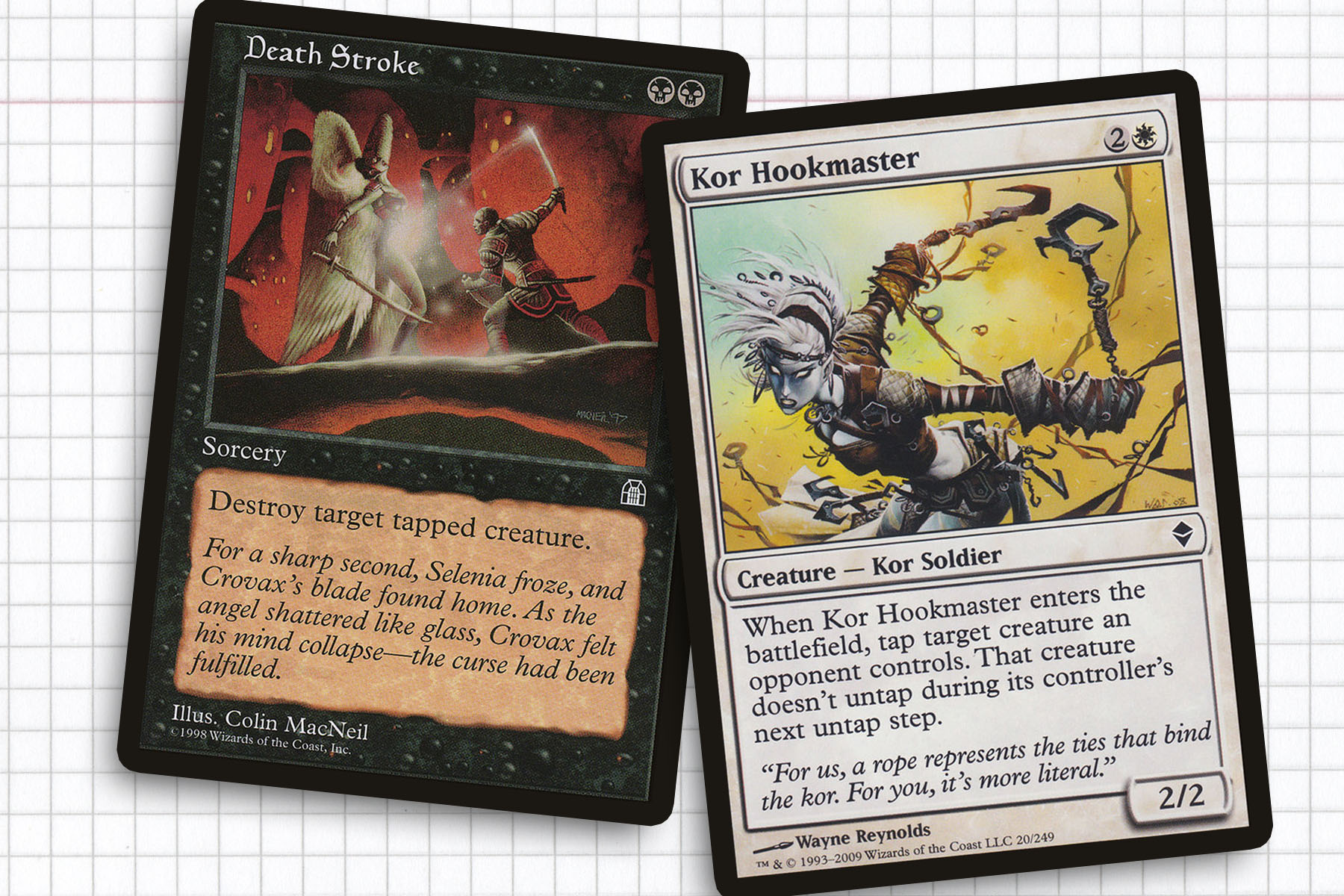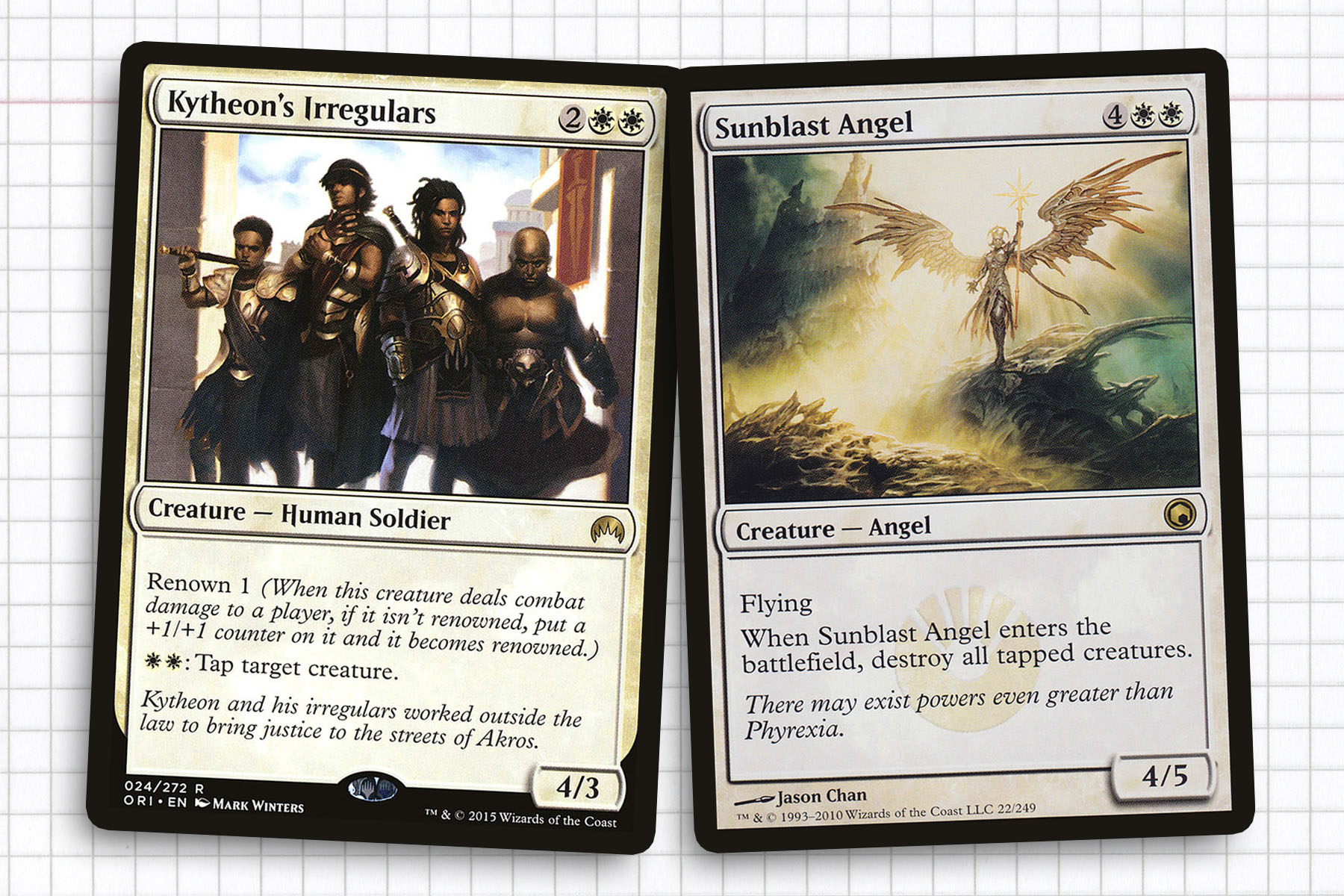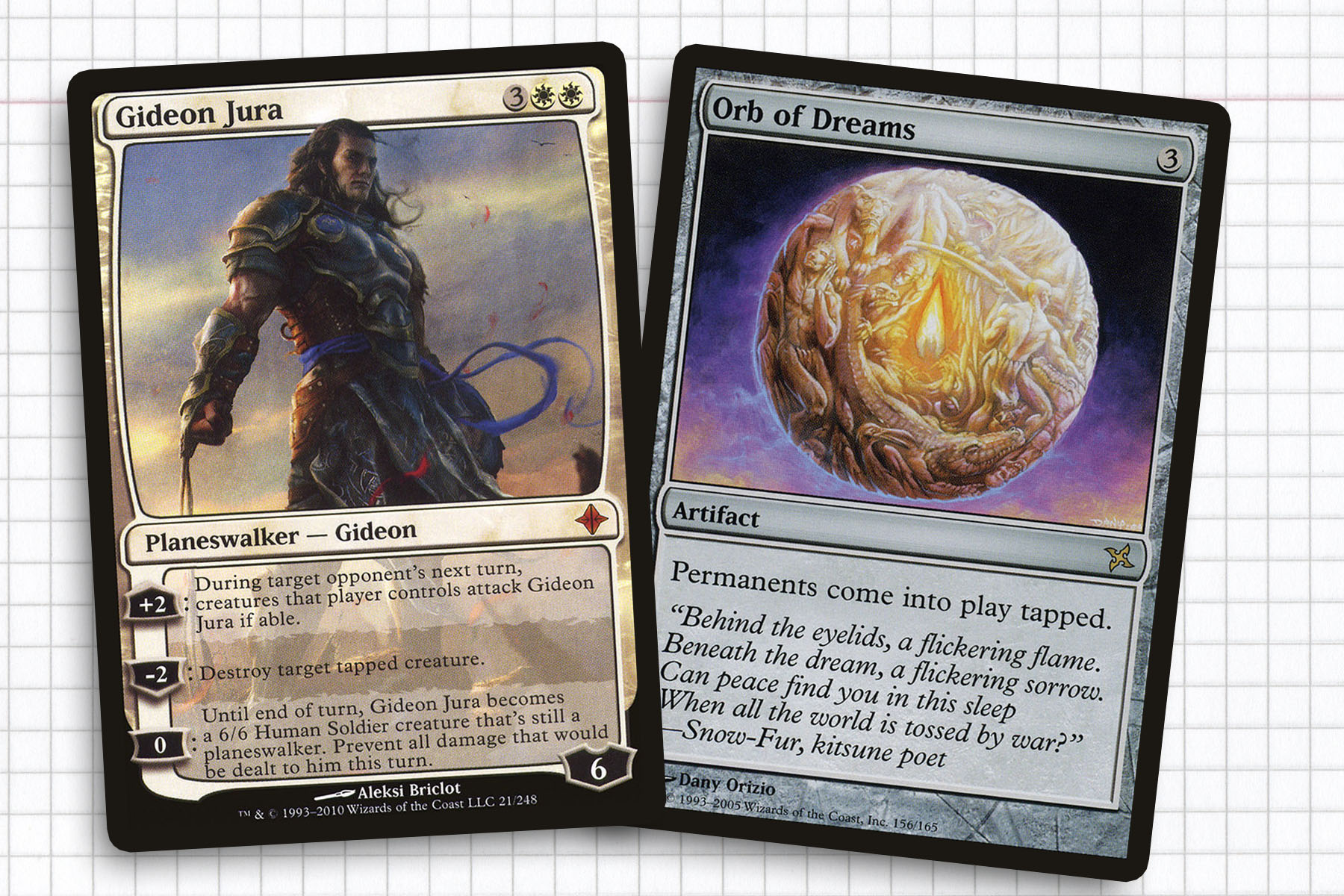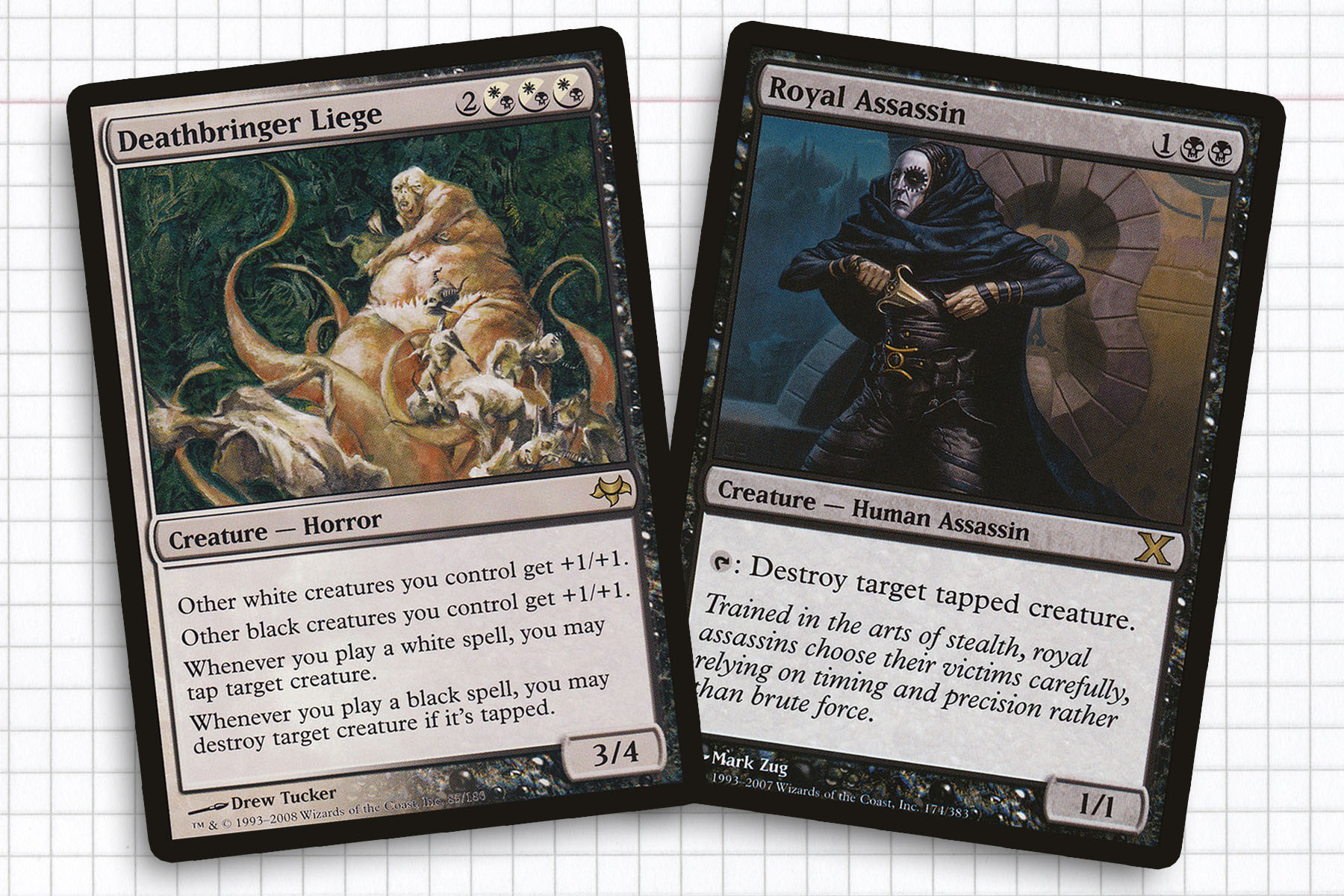This past weekend I was fortunate enough to be invited to an evening of Oathbreaker. This was going to be my first time playing against other people. I brought a Nahiri, the Harbinger deck that I felt the most satisfied with after other ideas didn’t pan out. But after Friday night, I realized that while I enjoyed the deck, it had issues.
I built my Nahiri deck around Allies with Divergent Transformations as the signature spell, and I started off against Kiora, Behemoth Beckoner paired with Turnabout and Jace Beleren with Show and Tell. I ultimately won a one game despite the Jace deck having Omniscience in play, thanks to a well-timed Tuktuk Scrapper. Later on in the evening, I faced off against Nissa, Steward of Elements with Explosive Vegetation, Sarkhan Unbroken with Personal Tutor, and Tezzeret, Master of the Bridge with Transmute Artifact. Those games provided a good mix, some very interactive while others stalled out until one person overcame the rest of the table.
Looking back, I loved exploring the format, with Hada Freeblade and Tuktuk Scrapper proving to be the most valuable creatures I cast. But my fatal mistake was treating deck construction too similarly to Commander, putting my curve too high for what proved to be a much faster format. While not entirely the same, the games I participated in reminded me a lot of Magic 2011-era Standard—games decided by a single dominant creature. With that insight in mind, I began crafting what would become a Sorin, Solemn Visitor deck built for attacking a battle cruiser metagame with tap down technology.
Oathbreaker: Sorin, Solemn Visitor with Blinding Beam
Creatures: Baird, Steward of Argive, Benalish Trapper, Custodi Lich, Deathbringer Liege, Gideon’s Avenger, Imposing Sovereign, Kinjalli’s Sunwing, Kor Hookmaster, Kytheon’s Irregulars, Nomad Decoy, Rathi Assassin, Rathi Trapper, Royal Assassin, Sunblast Angel, Thalia, Heretic Cathar, Yosei, the Morning Star
Artifacts: Orb of Dreams, Throne of the God-Pharaoh
Enchantments: Blind Obedience, Crackdown
Instants: Angelsong, Batwing Brume, Darkness, Ethereal Haze, Glimpse the Sun God, Hero’s Downfall, Safe Passage
Sorceries: Blinding Light, Damnation, Murderous Compulsion, Regna’s Sanction, Righteous Fury, Swift Reckoning, Wrath of God
Planeswalker: Gideon Jura
Land: 7 Plains, 7 Swamp, Caves of Koilos, Concealed Courtyard, Fetid Heath, Forsaken Sanctuary, Godless Shrine, Isolated Chapel, Orzhov Guildgate, Scoured Barrens, Temple of Silence

Translating a Winning Combination
The inspiration for this deck came from a casual deck that I played with my local playgroup and developed over a decade. Much like what I saw in Oathbreaker, that playgroup—made up of my high school/college friends—had a metagame where players usually came to the table with one or two dominant finishers. From 2009 to 2014, I played casual multiplayer Magic pretty much every weekend. In the middle of all of that I was spending my time between gaming sessions taking in the pieces to form this strange mismash of a deck I would often jokingly call “I’d Tap That,” based around Royal Assassin or Death Stroke.
When the parallel dawned on me, one of my first ideas was to grab a copy of Aminatou, the Fateshifter or Tamiyo, Field Researcher. But two issues came to the surface as I started building the deck skeleton: neither planeswalker had an ability that pushed the game towards completion, and the smaller deck did not need so many colors. What if I just stayed in Orzhov?
Of the options available, it really came down to Sorin, Grim Nemesis and Sorin, Solemn Visitor. Both have threatening and powerful ultimates; but Solemn Visitor costs less, adds loyalty while gaining life, and ultimates faster. Additionally, the stalling nature of the deck also meant that I felt more likely to reach the ultimate than I would elsewhere. Once I felt confident in choosing Sorin, the rest of my card selection came down to adding a couple more lands and finding cards to replace duplicates from the old non-singleton deck.

Focus on Creatures
I wanted this deck to be a little bit more creature-focused than the deck I was basing it on. Playing more creatures helps the deck win a few turns earlier to compensate for the speed of the format. This is also why the tap-down strategy seems so potent: if I can use Benalish Trapper to lock down the one creature a defending player has, I can use my remaining creatures as repeatable damage. Kytheon’s Irregulars provides extra power to tap down multiple creatures once we have enough mana in play.
In addition to the creatures, I wanted the signature spell to work with the deck’s theme. At first Angelsong or Glimpse the Sun God felt like reasonable options: you often only need to use Fog effects a few times, and X spells shouldn’t be affected by “Commander tax” as harshly. But the modal quality of Blinding Beam really started to shine in testing. Sometimes preventing an entire board of creatures from untapping was more useful than removing a few blockers in the short term.

More Ways to Finish
In my original design of the deck, Gideon Jura and Sunblast Angel were my primary paths to victory. Gideon avoided all sorcery speed removal and Sunblast Angel was removal; so once the dust settled I could generally attack into empty boards or use Glimpse the Sun God as soft removal for anything in my way. I don’t believe that strategy will fly anymore. By expanding my options with Gideon’s Avenger, Kytheon’s Irregulars, and Yosei, the Morning Star, I should be able to push through the last points of damage with a band of medium-sized creatures.
Maybe the most impressive card I have brought into this build is Orb of Dreams, which brings games to halt for everyone but me. I’ve developed a soft spot for the combination of Orb of Dreams and Crackdown to shut down other players’ late-game threats while punishing those who undervalue enchantment removal. Throne of the God-Pharaoh also made it into the deck to lower life totals in small chunks starting early in the game. While admittedly fighting against some of the strategy of the deck, where my tappers often remain available for use outside of my turn, this has really helped to spread damage when I start going on the offensive.

Return to 2009 Magic
My favorite part of playing this deck over the last week has been the feeling of nostalgia as I return to the Magic I played during my college years. That feeling of an opponent having to play around Royal Assassin or keeping back a few creatures as extra blockers has been very gratifying. Coming at a metagame from an angle that other players are not prepared can be very potent. Even in Commander, that is a lesson that I need to relearn occasionally.
Right now the draw of using a signature spell is so enticing, but I suspect that over time Oathbreaker is going shift from being so spell focused to focus more on creatures. Hopefully this deck will survive that change, but if it doesn’t I can’t really complain. Since moving my focus to Commander, this deck has been one of the things I’ve missed most from sixty-card Magic; and to have been able to relive those moments has been cathartic. While I’ve certainly built a lot of Magic decks that I felt came from my own creativity, “I’d Tap That” was my first successful attempt in that vein. Maybe Oathbreaker can be the perfect marriage between Commander and the nostalgic days of sixty-card Magic that many had at lunch tables in college or high school. That would be pretty sweet.
Ryan Sainio is a Graphic Designer who writes about EDH and the EDH community. He has been playing Magic: The Gathering since 7th Edition in 2002 and values flavorful and fun gameplay over competitively optimized decks.

